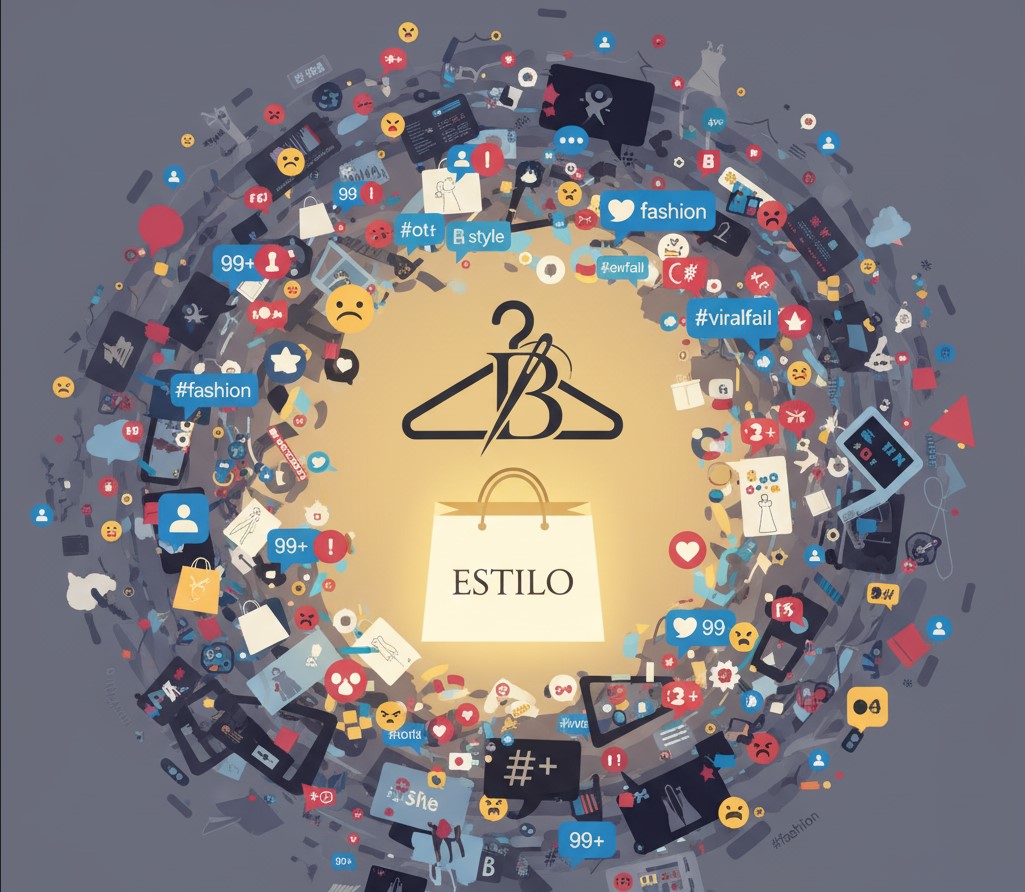
In an age where every scroll, swipe, and click brings a new brand into the spotlight, staying top-of-mind—and in the hearts of customers—is harder than ever. With fast fashion, influencer overload, and algorithm-driven chaos, the fashion world has never been noisier. In this landscape, brand loyalty is gold—and it’s not earned by flashy ads or celebrity endorsements alone.
So how do fashion brands stand out? How do they connect, not just sell?
The answer lies in intentional, value-driven fashion marketing strategies designed to build real relationships with your audience—not just attract their attention.
In this blog, we’ll explore proven, modern, and authentic fashion marketing strategies that help brands rise above the noise and build lasting loyalty with their customers.
Why Brand Loyalty Matters in Fashion
Before diving into strategies, let’s talk about why brand loyalty is worth chasing—especially in fashion.
- Higher Lifetime Value: Loyal customers spend more, return often, and are less price-sensitive.
- Word-of-Mouth Marketing: A loyal customer is your best ambassador—they share, refer, and promote your brand organically.
- Resilience to Trends: While other brands come and go, loyalty keeps you stable, even when fads fade.
- Lower Acquisition Costs: It’s far cheaper to retain a customer than acquire a new one.
Fashion is an emotional purchase. People wear what reflects their identity, lifestyle, and values. Build loyalty, and you’re not just selling clothes—you’re becoming part of their story.
1. Define a Clear Brand Identity
The foundation of any successful fashion marketing strategy is a distinct brand identity. If you want people to remember and return to your brand, you need to be clear about who you are, what you stand for, and why you exist.
Ask yourself:
- What emotions does your brand evoke?
- What values are you built on—sustainability, inclusivity, affordability, luxury?
- What’s your visual aesthetic, and is it consistent across platforms?
Example:
Everlane built loyalty by promoting radical transparency. Customers know exactly how much each product costs to make and where it’s sourced. That clarity created trust—and a loyal base of ethically-minded shoppers.
Actionable Tip: Create a brand style guide and stick to it. Your messaging, imagery, and tone should align across your website, social media, packaging, and even customer service interactions.
2. Create Value Beyond the Product
Fashion consumers today want more than just great clothes. They want meaning, connection, and community. The brands winning in the long run are the ones offering value beyond the product.
Ideas to implement:
- Educational content: Share fashion tips, styling guides, or behind-the-scenes looks.
- Cause marketing: Support social or environmental causes that align with your audience.
- Community building: Launch private groups, events, or forums where customers can connect.
Example:
Patagonia has long prioritized environmental activism alongside its outdoor clothing. Their commitment to the planet—not just their products—has created a fiercely loyal customer base.
Actionable Tip: Ask yourself: “What would our audience still love about us if we stopped selling clothes tomorrow?”
3. Leverage Personalization at Every Touchpoint
Generic marketing doesn’t cut it anymore. Your customers expect—and appreciate—personalized experiences, from their first website visit to post-purchase emails.
How to do it:
- Use customer data to recommend products based on browsing history or past purchases.
- Segment your email list to send targeted offers (e.g., by style preferences or geography).
- Retarget visitors with ads that reflect what they viewed or left in their cart.
Example:
Stitch Fix uses AI and human stylists to deliver a personalized clothing box based on the customer’s style quiz. This model is entirely built on understanding and serving the individual, not the masses.
Actionable Tip: Start small. Even personalized subject lines in your emails can increase open rates by 26%.
4. Develop a Loyalty or Rewards Program
A rewards program can turn casual buyers into brand advocates. By incentivizing repeat purchases and brand interaction, you deepen engagement and make your customers feel appreciated.
Elements of a good fashion rewards program:
- Points for purchases, referrals, or social media engagement.
- Tiered benefits to encourage loyalty growth over time.
- Early access to sales or exclusive collections.
Example:
Sephora’s Beauty Insider isn’t fashion, but it’s a gold standard in loyalty. Members get personalized offers, birthday gifts, and early access—all of which drive ongoing interaction and sales.
Actionable Tip: If you can’t launch a full-blown rewards program, start by offering perks for referrals or repeat purchases.
5. Tell Compelling Stories
Fashion is storytelling. Every product has a story—how it was made, who designed it, what inspired it, and who’s wearing it. Share those stories to create emotional resonance.
Ways to tell your brand story:
- Founder interviews or “about us” videos.
- Behind-the-scenes production content.
- Customer spotlight stories or user-generated content.
Example:
Reformation shares sustainability metrics with every item. Customers don’t just buy a dress—they buy into a narrative of environmental responsibility.
Actionable Tip: Add storytelling to your product pages. Instead of just fabric and size, talk about the journey behind the item.
6. Utilize Influencer Marketing Strategically

Influencers can be powerful brand amplifiers—but only when used with intention. Don’t chase follower counts. Focus on authentic partnerships with creators who genuinely align with your brand values.
What’s working now:
- Micro-influencers with high engagement and niche followings.
- Long-term partnerships instead of one-off posts.
- Behind-the-scenes collaborations (e.g., co-designing a collection).
Example:
Alo Yoga grew massively thanks to collaborations with fitness and wellness influencers who lived the brand’s active lifestyle ethos.
Actionable Tip: Ask your influencers to share why they love your brand—not just that they wear it.
7. Double Down on Customer Experience
From browsing to unboxing, your customer experience must reflect the quality and care you put into your clothes. Every positive interaction builds trust—and trust breeds loyalty.
Key areas to optimize:
- Website UX: Fast load times, mobile-friendly design, easy navigation.
- Customer service: Fast response times, empathetic support, hassle-free returns.
- Packaging: Branded, memorable unboxing experiences (bonus if eco-friendly).
Example:
Zappos built its brand on exceptional customer service. Free returns, no-hassle refunds, and a “surprise and delight” philosophy earned them raving fans.
Actionable Tip: Audit your entire buying journey. Where could friction be reduced or delight added?
8. Encourage and Amplify User-Generated Content (UGC)
When real people share your fashion on social media, it’s social proof—and social proof sells. Encourage your customers to post photos, tag your brand, or use a branded hashtag.
Benefits of UGC:
- Increases trust and credibility.
- Expands your reach organically.
- Gives you authentic content to reshare.
Example:
Aritzia actively reposts customer outfits on Instagram, showing real people (not just models) wearing their clothes. This builds community and makes customers feel seen.
Actionable Tip: Run a monthly giveaway where you feature and reward the best customer look using your hashtag.
9. Focus on Consistent, Authentic Content Marketing
Consistency builds familiarity. Authenticity builds trust. Your content should do both.
And if you want to create buzz while building brand loyalty, don’t underestimate the power of a viral content marketing strategy. This approach isn’t just about chasing views—it’s about crafting meaningful, shareable content that resonates with your audience on a deeper level and naturally spreads through engagement.
Content that builds loyalty:
- Blog posts offering fashion tips or interviews with designers.
- Weekly style guides tailored to seasons or occasions.
- Brand videos that highlight mission, values, or process.
Example:
Madewell’s blog features styling tips, playlists, interviews, and cultural content that aligns with their aesthetic—keeping their audience engaged between purchases.
Actionable Tip: Create a content calendar and commit to regular, high-quality content across your channels.
10. Listen and Evolve With Your Audience
The best fashion marketing strategies aren’t just top-down—they’re responsive. Use feedback loops to listen, learn, and adapt.
Where to listen:
- Product reviews and returns.
- Social media comments and DMs.
- Customer surveys and polls.
Example:
Girlfriend Collective made size inclusivity a core value after listening to early feedback. This responsiveness helped them build deep loyalty with an underserved market.
Actionable Tip: Schedule quarterly reviews of customer feedback. Use insights to guide product, content, and service updates.
Final Thoughts: Loyalty Is Earned, Not Bought
In a fast-moving, hyper-saturated fashion landscape, standing out isn’t just about louder ads or bolder designs. It’s about deeper connections. The most effective fashion marketing strategies focus not just on gaining customers, but keeping them.
Because when customers feel seen, heard, and valued—they don’t just buy. They stay. They share. They believe.
So slow down. Go deeper. Build something worth coming back to.










Leave a Reply